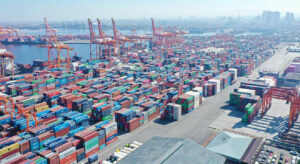Last week the Philippine Statistics Authority (PSA) released three important pieces of data: GDP performance in the second quarter (Q2) of 2025, which was 5.5%; the inflation rate in July, which was 0.9%; and the unemployment rate in June, which was 3.7%.
The GDP growth of 5.5% was the third fastest among the top 50 largest economies in GDP size that have reported their Q2 data so far. This is next to Vietnam and Taiwan that both grew by 8%. India has yet to release its Q2 data and it will likely be higher than the Philippines’.
The inflation rate of 0.9% was a six-year low for the country, and similar to Singapore’s 0.8%. It was lower than Malaysia’s 1.1%, Taiwan’s 1.5%, South Korea and India’s 2.1%, Indonesia’s 2.4%, Vietnam’s 3.2%, and Japan’s 3.3%.
Our unemployment rate of 3.7% was similar to Hong Kong’s 3.5% and lower than Indonesia’s 4.8% (March, no June data is available yet), or China’s 5% and India’s 5.6%.
The government’s economic team deserves praise as they are able to sustain the growth momentum while keeping unemployment and inflation rates at low levels. I quote here from the press statements of three Cabinet Secretaries.
Finance Secretary Ralph G. Recto stated that: “The back-to-back good news — low inflation rate, vibrant labor market, and strong GDP growth — are very encouraging…. tuloy-tuloy po kami sa aming trabaho hangga’t ang ginhawa ay hindi lang nakikita sa datos, kundi nasa hapag, nasa bulsa, at nasa kinabukasan ng bawat pamilyang Pilipino. (We will continue with our work until the ease and relief is not only seen in the data, but also on the table, in the pocket, and in the future of every Filipino family).”
Budget Secretary Amenah F. Pangandaman optimistically projected that: “We anticipate growth to accelerate in the second half of the year and settle within the 5.5% to 6.5% target range by the end of the year, driven by strong domestic demand and sustained public investment.”
Economics Secretary Arsenio M. Balisacan summarized: “Our continued economic expansion reflects not only the success of our policies, but also the resilience, creativity, and determination of the Filipino people.”
I have compared the average Q1-Q2 growth of 2025 over the last two years, for major economies that have Q2 data already. The Philippines has the third fastest growth so far, while South Korea, Germany, and Austria are the laggards (see Table 1).
I was personally expecting growth of 6% in Q2, and other economists projected growth of 5.7-6%. What prevented the country from growing faster than 5.5%? To figure this out, I checked the PSA time series quarterly data from 2000 to 2025. I chose a five-year interval for both GDP demand side and GDP supply side.
On the demand side, household consumption was 77% of total GDP in 2005, and this declined to 71% in 2025. But while household consumption is still the largest component of GDP, its growth is decelerating. Government consumption, on the other hand, is rising, from 11% in 2005 to 17% in 2025, and growth is high at 14% in 2025. Investments or gross capital formation also increased its share, from 17% in 2005 to 24% in 2025, but growth is decelerating.
On the supply side or industrial origin, there has been a decline in Agriculture, fishery and forestry (AFF), from 14% in 2005 to 8% in 2025. Industry also declined, from 31% to 29%, while the services sector keeps expanding, from 55% to 63% over the same period. Growth in both AFF and Industry is low while growth in services sector is high (see Table 2).
It is redundant to state this over and over again, but we have to keep growing fast, and we must attain an annual growth of 6% or higher for a decade at least. Both the industry and AFF sectors must grow faster than their recent performance, while the services sector only need to retain its high growth level.
More growth means more job creation and lower unemployment, more supply of goods and services, which all lead to lower inflation.
Bienvenido S. Oplas, Jr. is the president of Bienvenido S. Oplas, Jr. Research Consultancy Services, and Minimal Government Thinkers. He is an international fellow of the Tholos Foundation.
minimalgovernment@gmail.com

